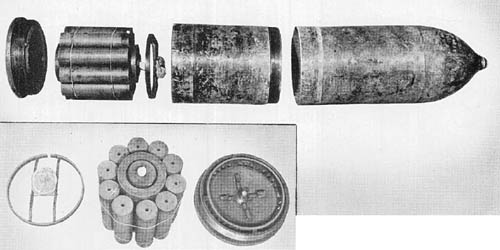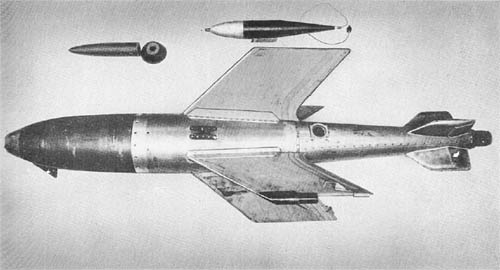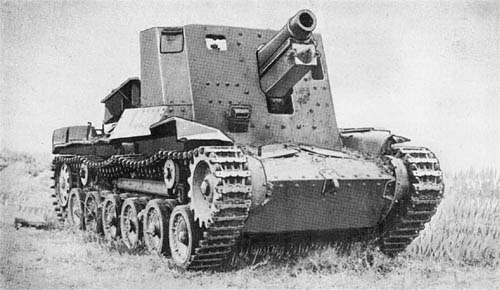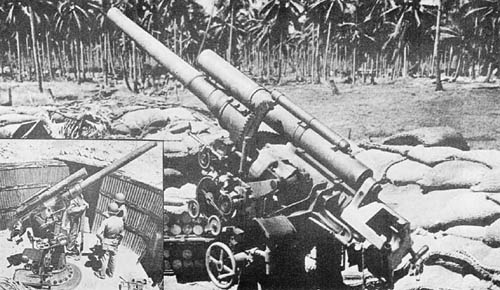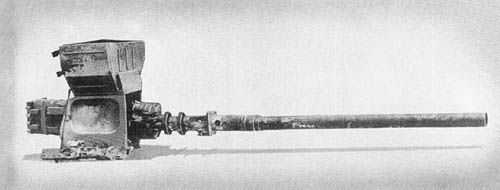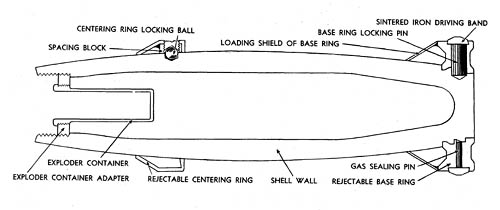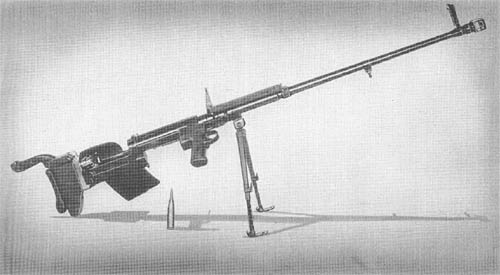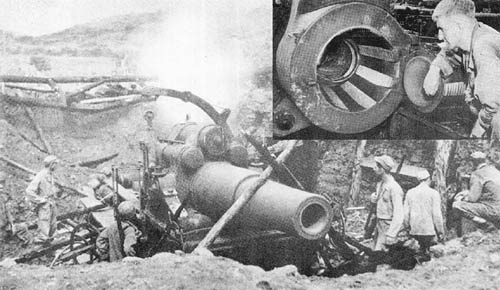
This howitzer was captured on Luzon. The emplacement, circular in shape and measuring 33 feet in diameter and 8 feet in depth, was camouflaged by a house on rails which was rolled back when the guns were to be fired. A small garden of banana trees was planted around the emplacement to add to the effect.
The howitzer tube is believed to be a built-up type. The liner is rifled with a uniform right hand twist, calculated to be one turn in 9.4 calibers. Two air flasks are mounted on the carriage for blowing out the tube after firing. Two equilibrators are mounted below the tube. The breech mechanism is an interrupted screw type having 8 segments of 20 threads. A percussion hammer firing mechanism is operated by a lanyard. A short cartridge case is used for obturation.
The upper carriage is a rectangular steel frame approximately 18 feet, 9 inches long, and 4 feet, 8 inches wide, fixed to a baseplate. The lower carriage is a truncated steel cone embedded in concrete approximately 6 to 8 feet under the ground. The upper carriage baseplate rests on a rail above a worm wheel, fixed to the lower carriage which engages a spur rack fitted to the base of the upper carriage.
The traversing handwheel is mounted in a horizontal position engaging a vertical shaft which terminates in the worm gear. The elevating handwheels, one on either side of the tube, are mounted on the carriage in a vertical position. A direct shaft from the elevating handwheel terminates in a spur gear which engages the elevating arc.
A panoramic sight is mounted on the right side of the gun.
SPECIFICATIONS
| Caliber | | 305 mm (12 ins. approx.) |
| Weight (firing position) |
| Length of tube and breech | | 16 ft., 6 ins. |
| Length of carriage base | | 18 ft., 9 ins. |
| Width of carriage base | | 4 ft., 8 ins. |
| Length (firing position) |
| Height (firing position) |
| Width (overall) |
| Length of bore |
| No. of lands | | 72 |
| Width of grooves |
| Depth of grooves |
| Width of lands |
| Muzzle velocity (shell) |
| Max. range (horizontal)—Trans. document | | 13,000 yds. |
| Max. range (vertical) |
| Rate of fire |
| Traverse | | 360° |
| Elevation, scale reading | | 70° |
| Depression, scale reading | | 3° |
| Length of recoil, scale reading | | 420 mm |
| Ammunition |
| Wt. of projectile—Trans. document | | 970 lbs. |
Japanese: p. 116.3 (August 1, 1945)
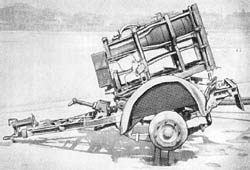 This rocket projector very closely resembles the
This rocket projector very closely resembles the 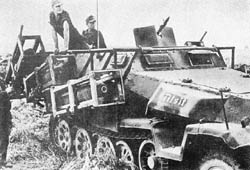 This rocket projector is designed for use on half-tracked armored personnel carriers. The principal feature of the device is the carrier plate, three of which are mounted on each side of the half-track. Each is adjustable for elevation of 5° to 45°, and is believed to be equipped with an elevating scale. The actual projector consists of the crate in which the
This rocket projector is designed for use on half-tracked armored personnel carriers. The principal feature of the device is the carrier plate, three of which are mounted on each side of the half-track. Each is adjustable for elevation of 5° to 45°, and is believed to be equipped with an elevating scale. The actual projector consists of the crate in which the 